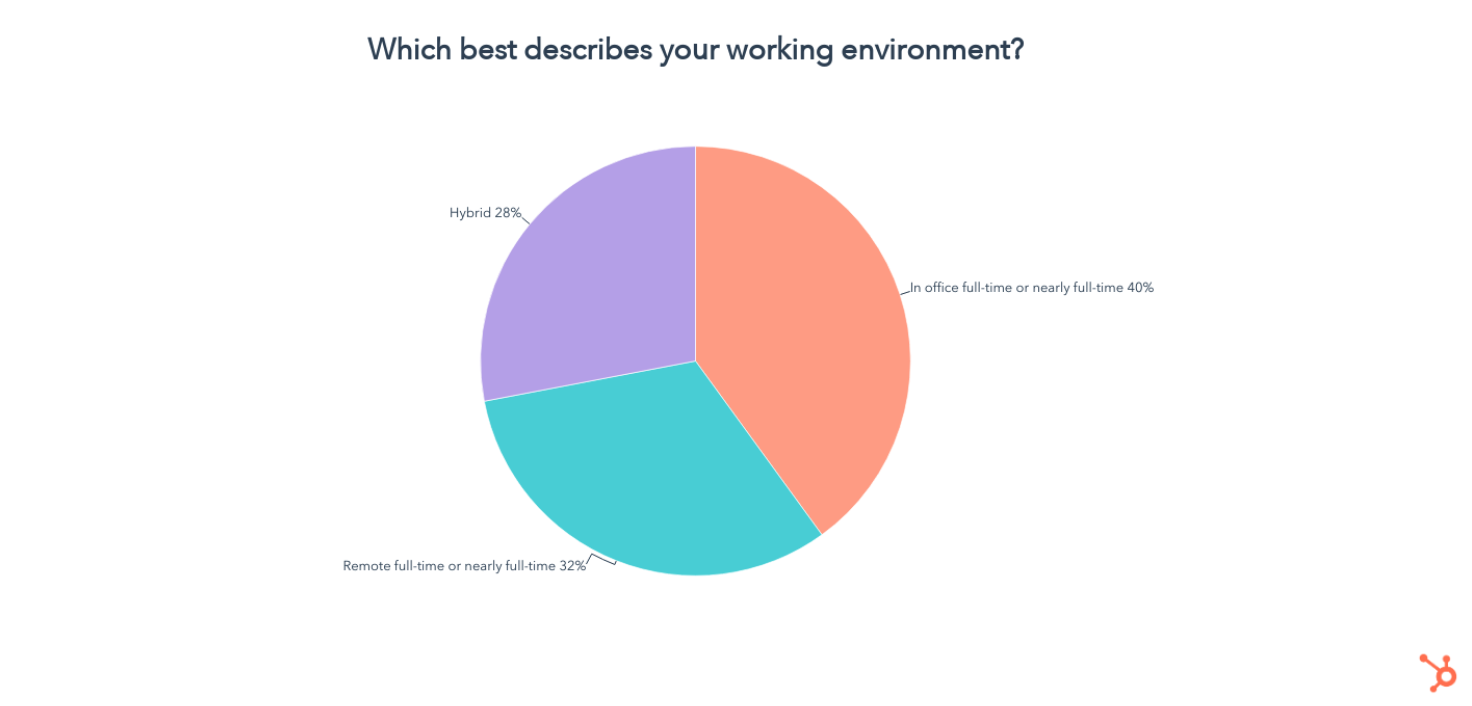Remember when we used to wake up bright and early and commute to the office five days a week?
Thinking back, it feels like a distant memory of a time before Covid-19. But for some workers, the days of rolling out of bed and hopping on a computer from the comfort of home could be coming to an end.
With the pandemic winding down, many companies like Apple and Google are going for a hybrid model, asking employees to come in a few days a week. But others, notably Tesla and Goldman Sachs, are requiring workers to come back to the office full-time.
Despite studies showing that workers are happier — and more productive — when working from home, the possibility of a full return to the office looms over remote and hybrid workers.
But will those employees rush back into the office when asked to? We did our own consumer research to find out.
Will In-Office Work be a Dealbreaker for Employees?
When we asked over 200 remote/hybrid workers if they’d consider leaving their job if forced to go back to the office full-time, 54% say they would look elsewhere.
 Why? Workers Crave Flexibility
Why? Workers Crave Flexibility
We found that flexibility in working remotely, a flexible work schedule, and a healthy work/life balance are among the top reasons remote or hybrid workers stay in their jobs.
In fact, flexibility in working remotely is almost as important as pay:

Who’s Still Working Remotely?
You might also be wondering what percentage of workers are currently remote, fully in-office, or using a hybrid model.
 Working on-site is the dominant model, with 40% of employees in the office full-time, while 32% are fully remote and 28% are hybrid.
Working on-site is the dominant model, with 40% of employees in the office full-time, while 32% are fully remote and 28% are hybrid.
What Business Leaders and Managers Should Keep in Mind
Of course, some work simply can’t be done remotely, but the pandemic proved that even those jobs could have more flexibility than we thought.
While we can’t predict all the effects of making employees go back to the office full-time, it’s clear that doing so when unnecessary could make many employees consider their exit.
If you’re an employer thinking of requiring a full-time return to the office, make sure to proceed with empathy and patience, transparently explain to your team why the work must be done in office, and consider the possibility that some of your talent could move to another company if they prefer flexibility.
To help your employees transition back to the office, while still retaining a healthy level of work-life balance, you could also consider alternatives like:
- Flexible office and home hours on light meeting weeks.
- A company-wide meeting free day each week (Our HubSpotters love our Meeting-Free Fridays!)
- A few more vacation days in summer or during the winter holidays.
- Extra time off for work anniversaries. (An example of this would be HubSpot’s 5-Year Sabbatical Program)
- Additional family, sickness, or mental health leave options when possible
Lastly, if remote and hybrid work are doable for your marketing department or business, but you or other managers on your team have less experience with a remote workforce — don’t let that hold you back from building great virtual strategies. To learn the ins and outs of remote or dispersed team management, with tips from HubSpot leaders who’ve mastered it, check out this ultimate guide.
More Insights on Trends That Matter
The data in this article came from our bi-annual trends survey where we asked 1,000 people about topics ranging from the metaverse to shopping habits, online communities, and the great resignation.
To learn all about the key consumer trends that could impact your business or marketing strategy in the next six months, check out our upcoming State of Consumer Trends Report.
![]()


